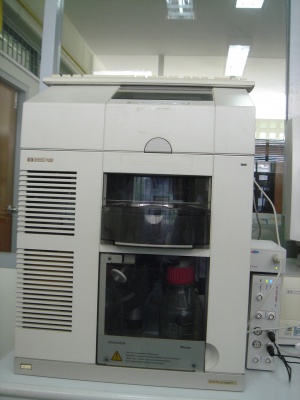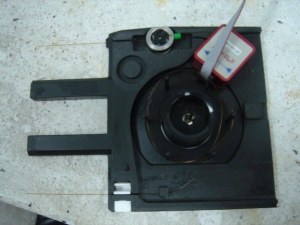Difference between revisions of "Agilent 1600CEシステム"
| Line 1: | Line 1: | ||
[[File:DSC03226-1.JPG|300px|thumb|right|eDAQ C4D システムを Agilent 1600 CE に接続する ]] | [[File:DSC03226-1.JPG|300px|thumb|right|eDAQ C4D システムを Agilent 1600 CE に接続する ]] | ||
| − | '' このアプリケーションノートでは eDAQ C4D システムを Agilent 1600 CE | + | '' このアプリケーションノートでは eDAQ C4D システムを Agilent 1600 CE 装置に接続する方法を説明します。'' |
| − | == | + | == はじめに == |
| − | + | eDAQ C4D システムは Agilent 1600 CE 装置に接続することができます。 | |
| − | == | + | == C4D ハードウェアユニットに Agilent 検出器を接続する== |
Some Agilent detectors have an analog output. This can be connected to the C4D hardware, so that signals from both the C4D and Agilent detector can be displayed in the eDAQ [http://www.edaq.com/ES280 PowerChrom software]. | Some Agilent detectors have an analog output. This can be connected to the C4D hardware, so that signals from both the C4D and Agilent detector can be displayed in the eDAQ [http://www.edaq.com/ES280 PowerChrom software]. | ||
Revision as of 13:42, 13 February 2014
このアプリケーションノートでは eDAQ C4D システムを Agilent 1600 CE 装置に接続する方法を説明します。
Contents
はじめに
eDAQ C4D システムは Agilent 1600 CE 装置に接続することができます。
C4D ハードウェアユニットに Agilent 検出器を接続する
Some Agilent detectors have an analog output. This can be connected to the C4D hardware, so that signals from both the C4D and Agilent detector can be displayed in the eDAQ PowerChrom software.
Recording the C4D signal in ChemStation
If you wish to record the C4D signal using the Agilent ChemStation software, the ER815 C4D Detector has an analog output for this. The Agilent 1600 CE instrument doesn’t have an analogue input, so the Agilent 35900E data acquisition interface is required to connect a third party detector, such as the C4D.
Installing the C4D headstage in the Agilent cartridge
It is easy to mount the ET120 C4D Headstage inside the Agilent CE cartridge. Simply thread the capillary through the channel in the side of the C4D headstage and fix in place.
You should ensure that the C4D headstage and its flat grey cable are at least 1 cm away from the capillary as it loops inside the cartridge. This is to prevent the high voltage inside the capillary from shorting through the headstage and its cable, which are both electrically grounded.
You should also ensure that the C4D hardware unit is connected to an electrical socket which is grounded. Connect the C4D hardware directly to the electrical socket in the wall, not using an electrical power board.
Citations
- The eDAQ C4D was used with the Agilent CE for the analysis inorganic ions in drinking water. DOI: 10.1080/10826076.2013.825862
- The C4D detected both anions and cations in a single injection. This was done by injecting the sample at both ends of the capillary and placing the C4D headstage at an appropriate position along the capillary.
- It was noted that C4D detection is an alternative and more flexible method of detection compared to the standard optical detection. The effective separation length can easily be adjusted by simply sliding the C4D headstage along the capillary, significantly facilitating the method development and the obtained separation efficiency.
- The estimated limits of detection (0.07 – 2 ppm) and defined limits of quantification (0.3 – 7 ppm) were comparable or better than those described for indirect UV detection, allowing much broader linear ranges (up to 120 ppm) for most of the studied ions.
- The Agilent CE was coupled with the eDAQ C4D for the simultaneous determination of atenolol and amiloride in pharmaceutical preparations. Good analytical performance with regards to linearity, reproducibility, and accuracy was achieved using the CE-C4D method. DOI: 10.1002/bmc.1390
- The determination of cis/trans isomers ofoctadec-9-enoic acid and other long chain fatty acids was performed using the Agilent CE with eDAQ C4D. The method was applied to the determination of fatty acids in margarine samples. The proposed method offers distinct advantages over the GC and HPLC methods, especially in terms of simplicity (without derivatization) and sensitivity. DOI: 10.1016/j.chroma.2013.03.014

